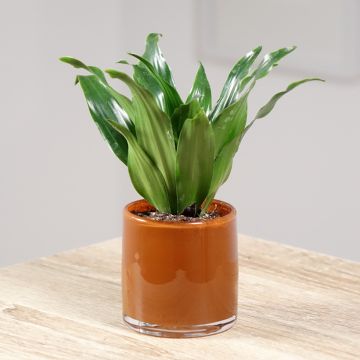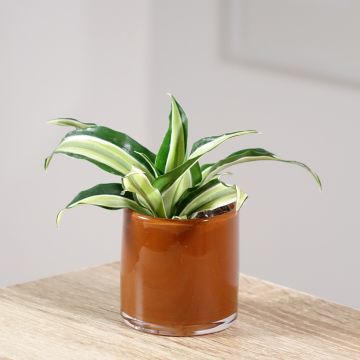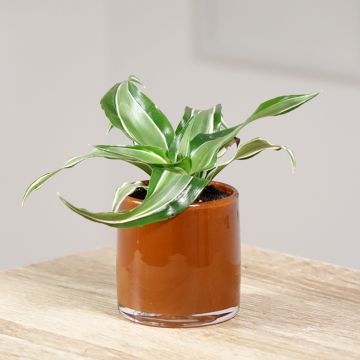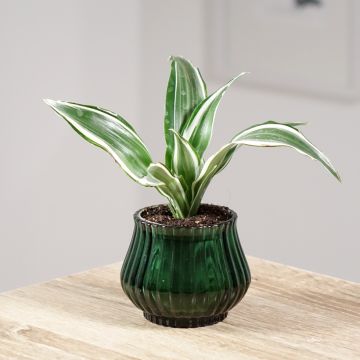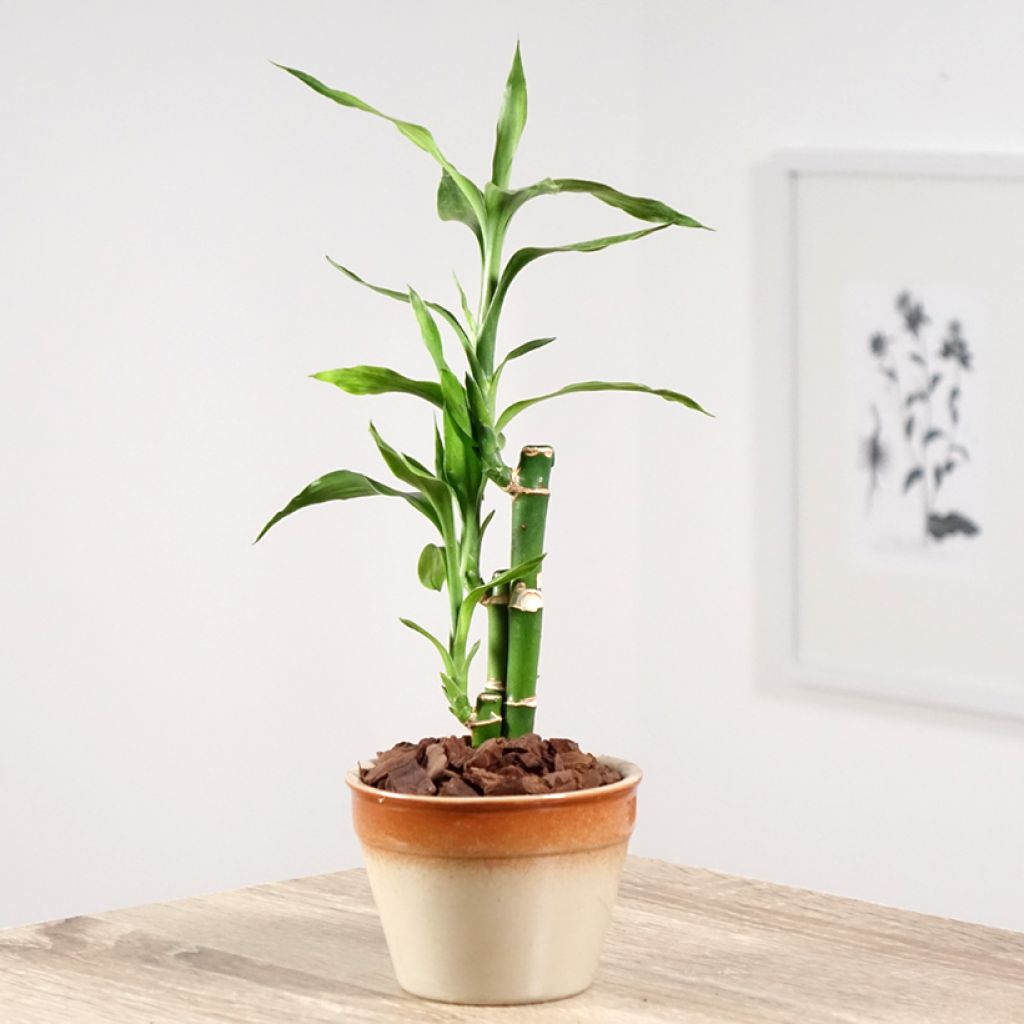

Lucky bamboo - Dracaena sanderiana
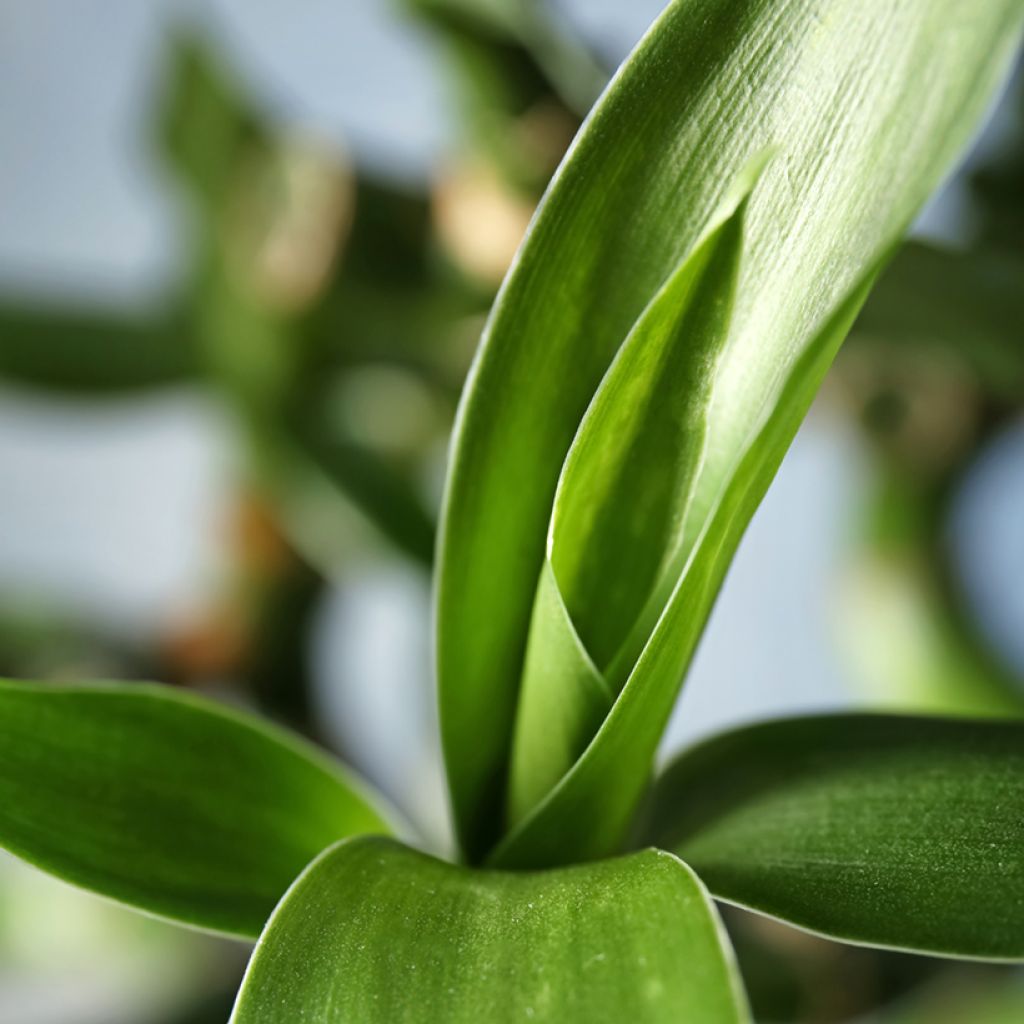

Lucky bamboo - Dracaena sanderiana
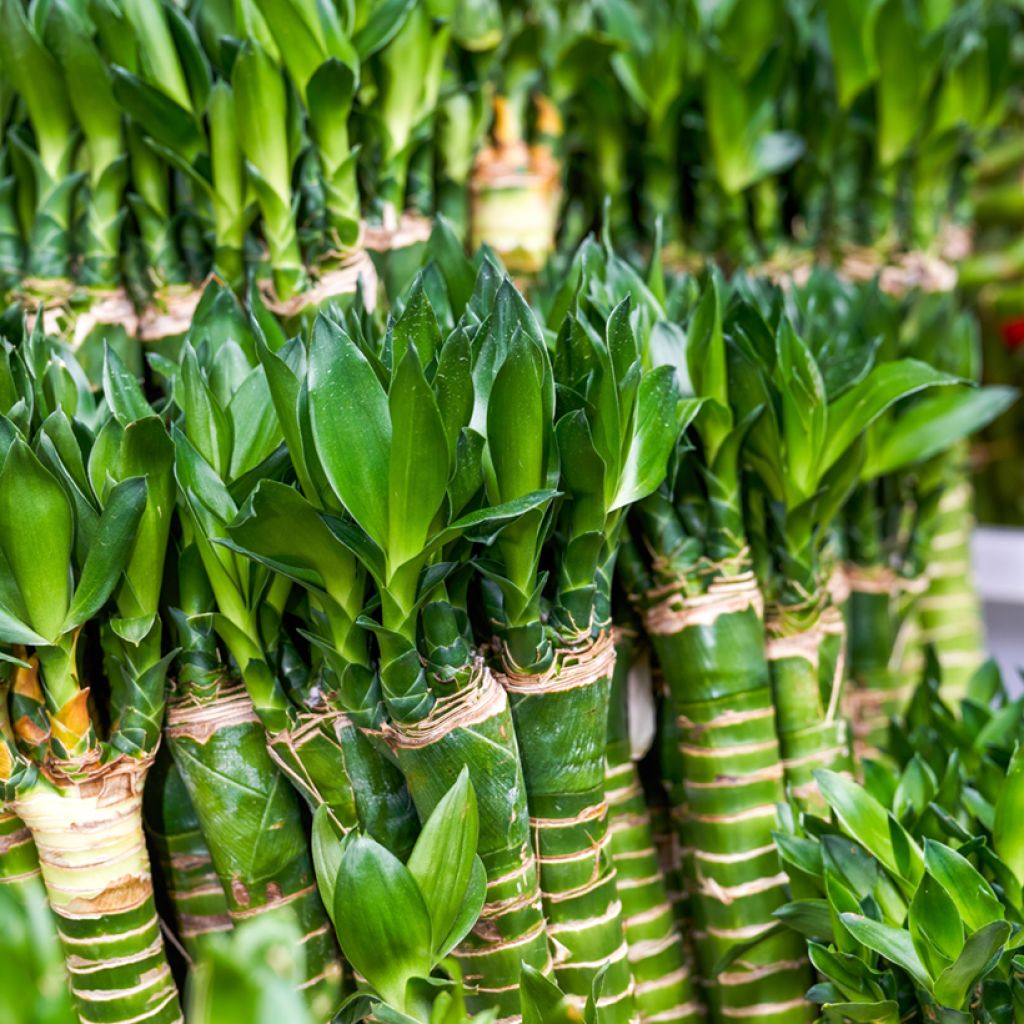

Lucky bamboo - Dracaena sanderiana


Lucky bamboo - Dracaena sanderiana
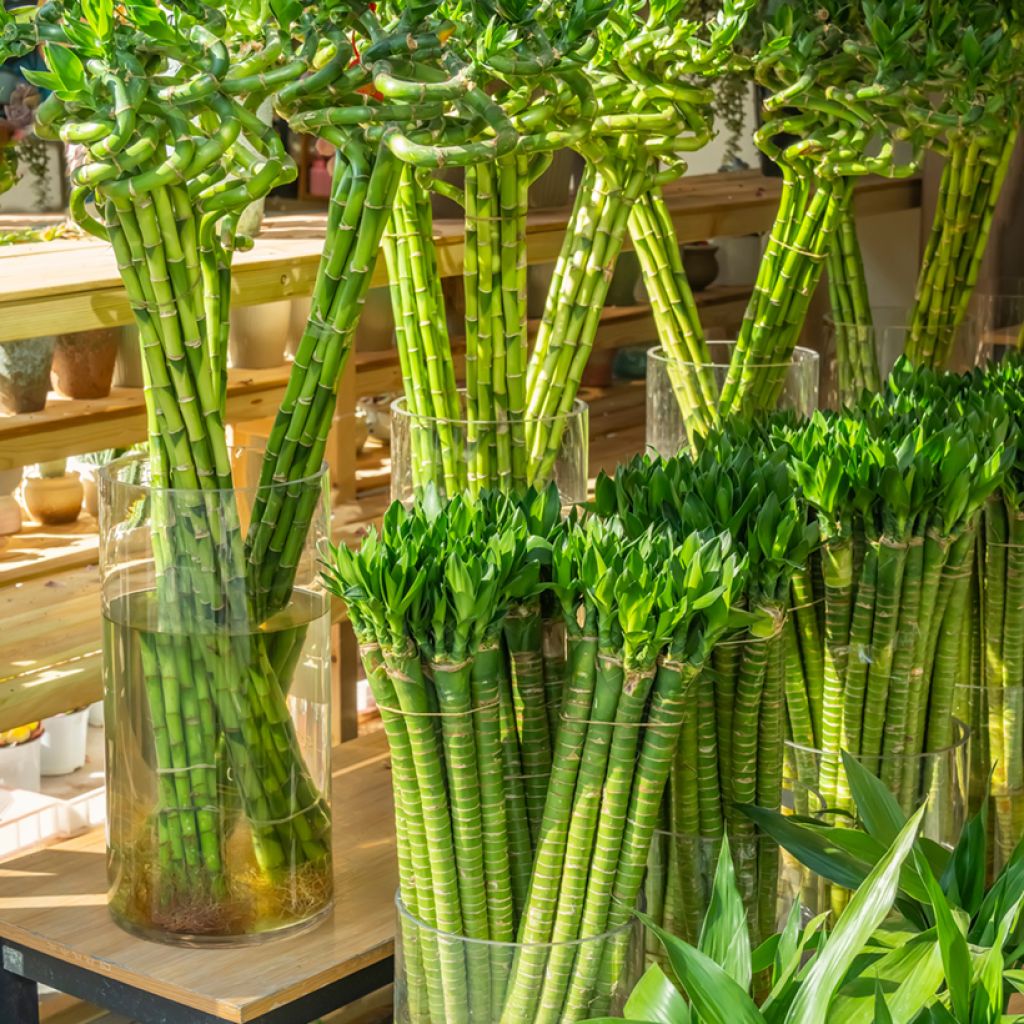

Lucky bamboo - Dracaena sanderiana
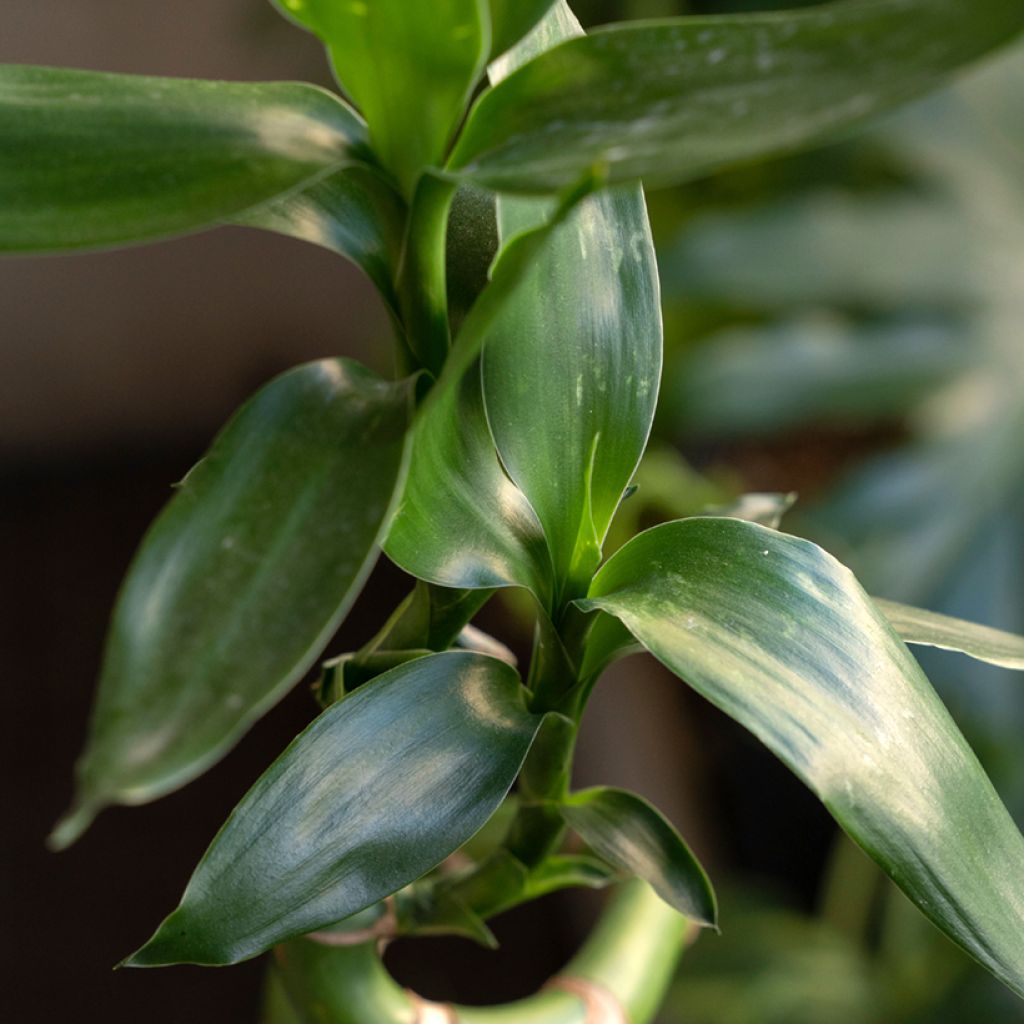

Lucky bamboo - Dracaena sanderiana
Lucky bamboo - Dracaena sanderiana
Dracaena sanderiana
Lucky bamboo, Belgian evergreen, Ribbon plant
This item cannot be shipped to the selected country
Delivery charge from 6,90 €
More information
Shipping country:
-
-
-
-
-
-
-
-
-
-
-
-
-
-
-
-
-
-
-
-
-
-
-
-
-
-
-
-
-
-
-
-
Schedule delivery date,
and select date in basket
This plant carries a 30 days recovery warranty
More information
We guarantee the quality of our plants for a full growing cycle, and will replace at our expense any plant that fails to recover under normal climatic and planting conditions.
From 7,90 € for pickup delivery and 6,90 € for home delivery
Express home delivery from 8,90 €.
Description
The Dracaena sanderiana is much better known by its common name Lucky Bamboo, or in French Bambou de la chance. According to Chinese tradition, it is believed to bring happiness, fortune, and positive energy. This slow-growing indoor Dragoon plant forms green ringed stems that indeed resemble the canes of certain bamboos. Typically straight and upright, they can be playfully twisted into spirals or braided together. Not particularly bushy, they bear one to three clusters of green, sword-shaped leaves at their tips. The plant adapts well to various growing conditions, whether in terms of humidity (from moderate to high), light levels (from low to bright, avoiding direct sunlight), or temperature (above 15°C).
After several reclassifications due to advances in systematic botany, the genus Dracaena (or Dragoon plant) is now a member of the Asparagaceae family. This family hosts many other ornamental genera as diverse in appearance as the Solomon's Seal (Polygonatum commutatum), with its arching stems adorned with graceful strings of white flowers, or the sculptural Dasylirion, with its rosettes of tough, extremely slender leaves. There are 111 species of Dracaena, primarily (though not exclusively) distributed across Africa and Southeast Asia. The Dracaena sanderiana itself originates from Cameroon in Central Africa, forming a ramified bush adapted to tropical climates and sensitive to cold. This botanical species can therefore only be grown indoors in our regions, at a minimum temperature of 15°C or preferably higher. Although not native to China, the Chinese have adopted it as a lucky plant associated with Feng Shui.
This Dracaena forms a a bright green stem about the thickness of a finger, marked by evenly spaced, pale-coloured nodes, giving the plant a bamboo-like appearance. Of course, it does not belong to the same botanical family as bamboos, which are Poaceae (grasses), and it's worth noting that other plants from different families share this whimsical resemblance, such as the Giant Dahlia (Dahlia imperialis) or Bamboo Dahlia. Your Lucky Bamboo, however, won’t become invasive, as its growth is slow and it won’t exceed 1.50 m at full maturity. Indoors, the stem does not branch out and stands upright unless twisted into a spiral, as horticulturists often do. It is crowned by one, two, or rarely three clusters of lanceolate leaves measuring 10 to 20 cm long. Their sheathing bases overlap, yet they stand almost vertically before arching elegantly. Tough, a vibrant green with a glossy surface, they also evoke the leaves of certain bamboos. The Lucky Bamboo is primarily valued for its graphic appearance as it does not flower indoors.
The plant can be grown in a pot with compost or in hydroponics, with the base of the stems submerged in a container of water—adding a piece of charcoal can help prevent disease. However, it cannot thrive fully submerged in an aquarium...
The Lucky Bamboo is unmatched for adding a zen touch to any room. In a contemporary setting, it pairs beautifully with other graphic plants such as the Areca palm with its aesthetically divided leaves, or the Beaucarnea recurvata (Elephant's Foot) with its thick base resembling an elephant’s foot, topped by a dense tuft of long ribbon-like leaves. Some plants from the Bromeliads family that includes the pineapple, such as the Aechmea, which forms decorative leaf rosettes, will also make perfect companions for your Dracaena.
Report an error about the product description
Lucky bamboo - Dracaena sanderiana in pictures


Foliage
Plant habit
Botanical data
Dracaena
sanderiana
Asparagaceae
Lucky bamboo, Belgian evergreen, Ribbon plant
Central Africa
Other Dracaena - Dragon Tree
View all →Location
Location
Maintenance and care
Potting advice, substrates and fertilisers
Houseplant care
Disease and pest advice
Maintenance and care
This item has not been reviewed yet - be the first to leave a review about it.
Haven't found what you were looking for?
Hardiness is the lowest winter temperature a plant can endure without suffering serious damage or even dying. However, hardiness is affected by location (a sheltered area, such as a patio), protection (winter cover) and soil type (hardiness is improved by well-drained soil).

Photo Sharing Terms & Conditions
In order to encourage gardeners to interact and share their experiences, Promesse de fleurs offers various media enabling content to be uploaded onto its Site - in particular via the ‘Photo sharing’ module.
The User agrees to refrain from:
- Posting any content that is illegal, prejudicial, insulting, racist, inciteful to hatred, revisionist, contrary to public decency, that infringes on privacy or on the privacy rights of third parties, in particular the publicity rights of persons and goods, intellectual property rights, or the right to privacy.
- Submitting content on behalf of a third party;
- Impersonate the identity of a third party and/or publish any personal information about a third party;
In general, the User undertakes to refrain from any unethical behaviour.
All Content (in particular text, comments, files, images, photos, videos, creative works, etc.), which may be subject to property or intellectual property rights, image or other private rights, shall remain the property of the User, subject to the limited rights granted by the terms of the licence granted by Promesse de fleurs as stated below. Users are at liberty to publish or not to publish such Content on the Site, notably via the ‘Photo Sharing’ facility, and accept that this Content shall be made public and freely accessible, notably on the Internet.
Users further acknowledge, undertake to have ,and guarantee that they hold all necessary rights and permissions to publish such material on the Site, in particular with regard to the legislation in force pertaining to any privacy, property, intellectual property, image, or contractual rights, or rights of any other nature. By publishing such Content on the Site, Users acknowledge accepting full liability as publishers of the Content within the meaning of the law, and grant Promesse de fleurs, free of charge, an inclusive, worldwide licence for the said Content for the entire duration of its publication, including all reproduction, representation, up/downloading, displaying, performing, transmission, and storage rights.
Users also grant permission for their name to be linked to the Content and accept that this link may not always be made available.
By engaging in posting material, Users consent to their Content becoming automatically accessible on the Internet, in particular on other sites and/or blogs and/or web pages of the Promesse de fleurs site, including in particular social pages and the Promesse de fleurs catalogue.
Users may secure the removal of entrusted content free of charge by issuing a simple request via our contact form.
The flowering period indicated on our website applies to countries and regions located in USDA zone 8 (France, the United Kingdom, Ireland, the Netherlands, etc.)
It will vary according to where you live:
- In zones 9 to 10 (Italy, Spain, Greece, etc.), flowering will occur about 2 to 4 weeks earlier.
- In zones 6 to 7 (Germany, Poland, Slovenia, and lower mountainous regions), flowering will be delayed by 2 to 3 weeks.
- In zone 5 (Central Europe, Scandinavia), blooming will be delayed by 3 to 5 weeks.
In temperate climates, pruning of spring-flowering shrubs (forsythia, spireas, etc.) should be done just after flowering.
Pruning of summer-flowering shrubs (Indian Lilac, Perovskia, etc.) can be done in winter or spring.
In cold regions as well as with frost-sensitive plants, avoid pruning too early when severe frosts may still occur.
The planting period indicated on our website applies to countries and regions located in USDA zone 8 (France, United Kingdom, Ireland, Netherlands).
It will vary according to where you live:
- In Mediterranean zones (Marseille, Madrid, Milan, etc.), autumn and winter are the best planting periods.
- In continental zones (Strasbourg, Munich, Vienna, etc.), delay planting by 2 to 3 weeks in spring and bring it forward by 2 to 4 weeks in autumn.
- In mountainous regions (the Alps, Pyrenees, Carpathians, etc.), it is best to plant in late spring (May-June) or late summer (August-September).
The harvesting period indicated on our website applies to countries and regions in USDA zone 8 (France, England, Ireland, the Netherlands).
In colder areas (Scandinavia, Poland, Austria...) fruit and vegetable harvests are likely to be delayed by 3-4 weeks.
In warmer areas (Italy, Spain, Greece, etc.), harvesting will probably take place earlier, depending on weather conditions.
The sowing periods indicated on our website apply to countries and regions within USDA Zone 8 (France, UK, Ireland, Netherlands).
In colder areas (Scandinavia, Poland, Austria...), delay any outdoor sowing by 3-4 weeks, or sow under glass.
In warmer climes (Italy, Spain, Greece, etc.), bring outdoor sowing forward by a few weeks.

































